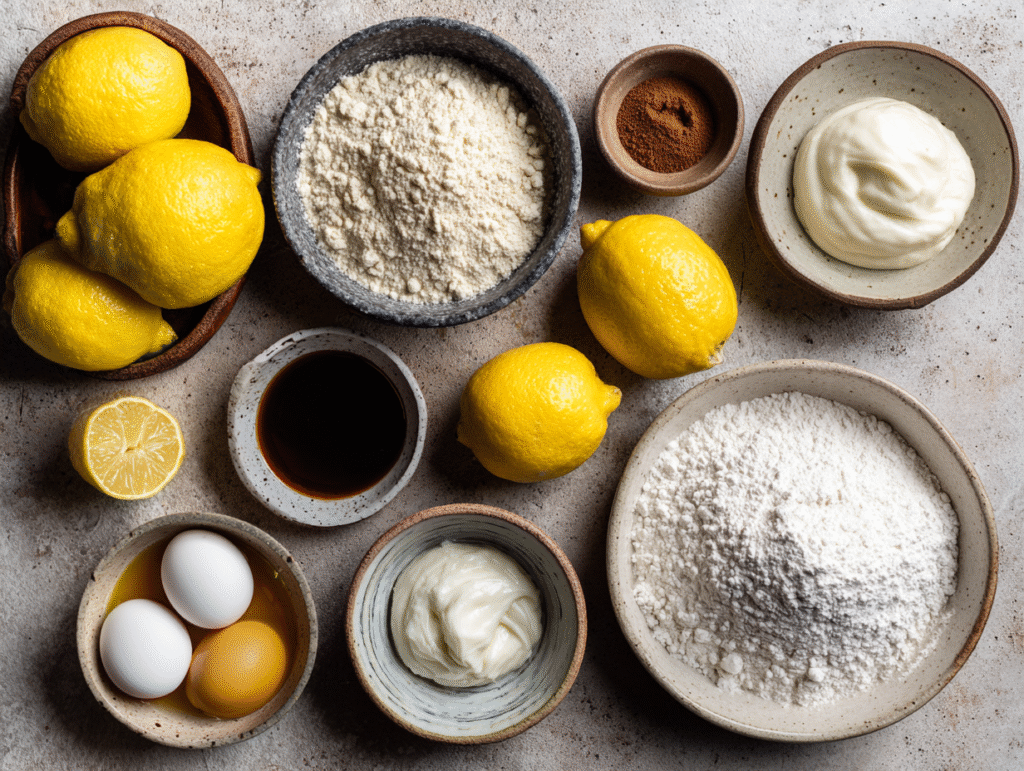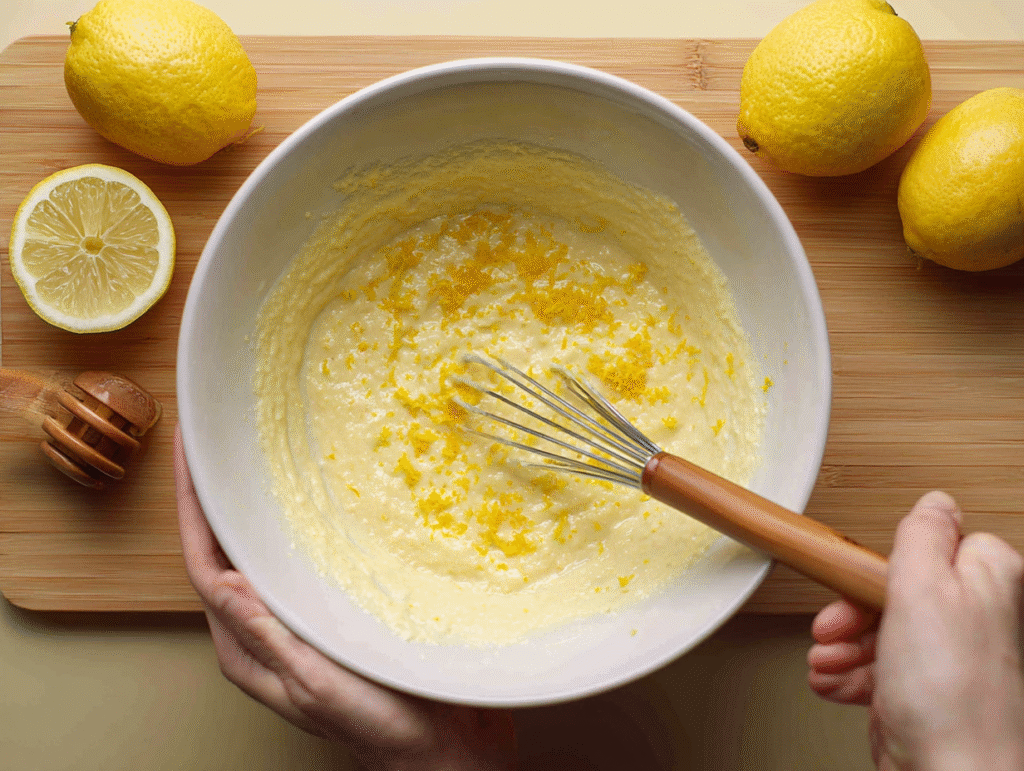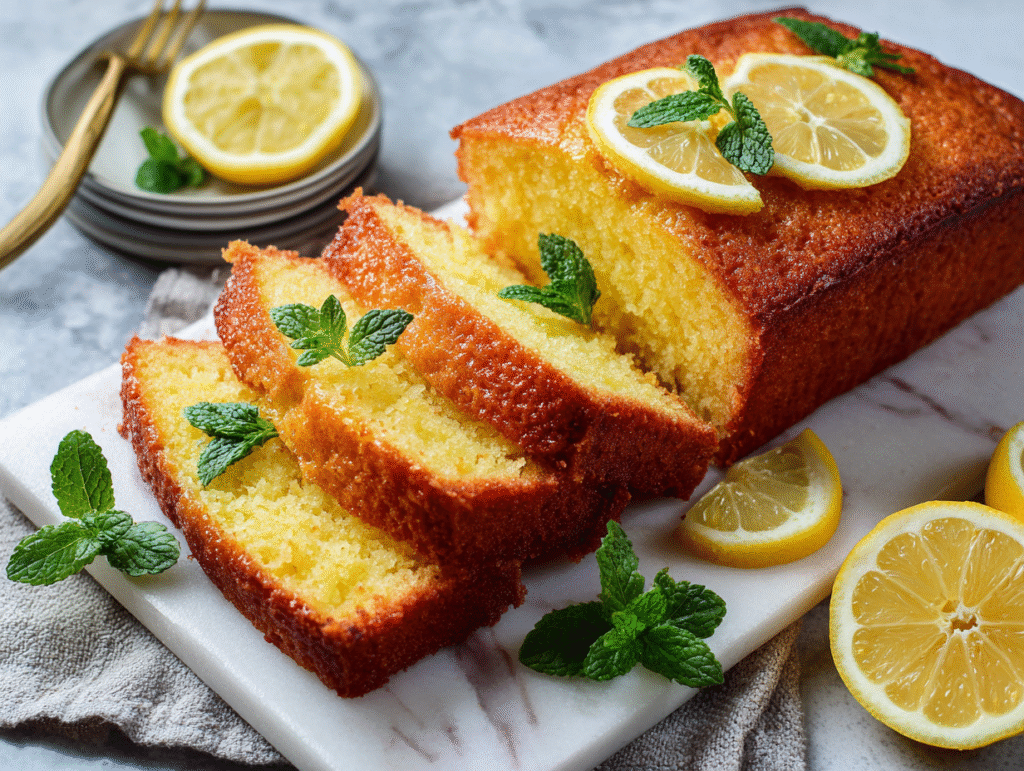Lemon loaf cake is a classic comfort bake, but what if you could enjoy that bright, zesty flavor with zero added sugar? In this article, I’m sharing my personal journey behind creating the perfect sugar-free lemon loaf cake—a recipe that doesn’t compromise on taste, texture, or joy.
You’ll learn how I balanced wholesome ingredients with a soft crumb, what sugar substitutes work best, and how to make it feel like dessert without the guilt. We’ll also explore common questions about baking sugar-free, especially for diabetics or anyone reducing their sugar intake. Ready to bake happy? Let’s dive in.
A Lemon-Sweet Memory with a Sugar-Free Twist
I still remember the first lemon loaf I ever made. It was dense, soaked in syrup, and absolutely loaded with sugar—basically dessert disguised as breakfast. But life (and my diet) changed after I began exploring low-sugar living for wellness reasons. That’s when the idea hit me: what if I could recreate that same citrusy joy with a sugar-free lemon loaf cake?
It took more than a few attempts to strike the right balance. Some loaves were too dry, others bland. But after a few tweaks—including Greek yogurt for moisture and monk fruit as a sweetener—it finally came together: a tender, golden loaf with a tangy glaze and none of the sugar crash. The lemon flavor popped, the texture was cloud-like, and best of all, it felt nourishing.
Now it’s become one of the most requested bakes from friends and readers. It’s inspired by sunshine, weekend brunches, and that feeling of treating yourself without regret. If you love vibrant citrusy bakes like this lemon crazy cake or a creamy twist like lemon cream cheese dump cake, this sugar-free lemon loaf cake belongs in your kitchen too.
And just between us? You’ll forget it’s sugar-free after the first bite.
The Ingredients That Make a Guilt-Free Lemon Loaf Shine
Choosing the Right Ingredients for Sugar-Free Lemon Loaf Cake
Making a sugar-free lemon loaf cake that tastes like the real deal starts with the right ingredients. The base is a blend of almond flour and all-purpose flour, which gives it structure and just enough tenderness. Greek yogurt adds creaminess and moisture, while eggs help the loaf rise and stay light. Fresh lemon juice and zest provide that bold citrus kick—you want real lemon flavor, not just aroma.

For sweetness, I rely on monk fruit sweetener because it bakes well and doesn’t leave an aftertaste. Stevia works too, though you may need to adjust the amount. A dash of vanilla, a pinch of salt, and baking powder round it out. If you want a gentle richness, add a spoonful of melted butter or avocado oil.
This loaf is especially popular with friends who love other better-for-you bakes like these blueberry swirl yogurt bites—proof that wholesome can still be indulgent.
Best Sugar Substitutes for Baking Without Compromise
Let’s talk swaps. Not all sugar-free sweeteners act the same in the oven. Monk fruit and erythritol blends (like Lakanto) mimic sugar most closely and yield a soft crumb without grittiness. Allulose is another favorite—it browns beautifully and gives that golden finish. Avoid plain stevia or saccharin, which can turn bitter when heated.
Want to experiment? Coconut sugar has a lower glycemic index, though it isn’t entirely sugar-free. For a creamy glaze, mix powdered erythritol with lemon juice until smooth. It hardens perfectly over a cooled loaf.
This recipe was partially inspired by the naturally sweet results I got from testing cottage cheese ice cream. It’s all about creating balance between flavor, texture, and health goals.
How to Nail the Bake: Moisture, Timing & Texture
Baking a Moist, Fluffy Sugar-Free Lemon Loaf Cake
The secret to a perfect sugar-free lemon loaf cake lies in precision and patience. Unlike traditional recipes, baking without sugar requires a few adjustments. Start by creaming the eggs and sweetener until light and airy—this builds structure and makes up for the lack of real sugar’s chemical role.

Don’t overmix once the flour is added. Overworked batter leads to tough, rubbery cake. Instead, fold gently until just combined. Bake at 325°F rather than 350°F. Lower temps allow the loaf to cook evenly without drying out, especially since sugar-free cakes tend to brown faster.
A toothpick should come out with a few moist crumbs—don’t wait for it to be bone dry or you’ll miss out on that dreamy texture. Let the loaf cool in the pan for 10 minutes before transferring it to a rack. This prevents it from breaking apart while it’s still fragile.
Much like the precision needed for mango cake filling, this loaf rewards attention to detail.
Common Mistakes When Making Sugar-Free Cakes
One of the biggest mistakes? Using too much sweetener. Sugar substitutes can be more intense, and overdoing them leads to a bitter finish or cooling aftertaste. Always follow the measured recommendation—even if you have a sweet tooth.
Another issue is skipping acid. The lemon juice isn’t just for flavor—it helps activate the baking powder and gives the loaf lift. Without it, the cake may fall flat. Also, never use liquid sweeteners unless the recipe specifically calls for it, as it throws off the moisture ratio.
If you’ve ever tried a flop like I did when making an early version of this cake, know this: it gets better. I made similar errors when first testing my gluten-free wacky cake, but lessons like these are what shape foolproof recipes.
Who It’s For & Why It Works for More Than Just Dieters
Who Should Enjoy Sugar-Free Lemon Loaf Cake
The beauty of this sugar-free lemon loaf cake is that it’s not just for people on a diet. Yes, it’s diabetic-friendly and perfect for those watching their blood sugar—but it’s also a crowd-pleaser for anyone who loves citrusy bakes without the sugar crash.
If you’re following a low-carb lifestyle, keto-inspired plan, or simply trying to limit processed ingredients, this loaf fits in beautifully. It has a light, soft crumb, bursts of lemon zest, and none of the heavy sweetness that weighs down traditional cakes.
And for families with mixed dietary needs? This cake keeps everyone happy. I’ve served it alongside brunch dishes like fresh fruit, yogurt, or even wellness shots for a balanced, energizing spread.

Even kids love it (especially with a touch of sugar-free glaze), proving that healthy baking can still feel like a treat. Think of it as a slice of sunshine—no sugar required.
Is Sugar-Free Really Sugar-Free? Understanding Labels & Health Claims
This question comes up a lot: “Is sugar-free actually sugar-free?” The short answer? Sometimes. True sugar-free recipes, like this one, use non-nutritive sweeteners that don’t raise blood glucose levels. But not all “sugar-free” products follow that rule.
Always check labels. Some use maltitol or hidden syrups, which can still affect blood sugar. That’s why I use monk fruit and erythritol—clean, plant-based options with no metabolic impact. These allow you to enjoy cake even if you’re diabetic or managing insulin resistance.
Recipes like this were inspired by my experiences experimenting with lower-glycemic desserts like my lemon raspberry layered pie, which balance natural fruit with intentional sweeteners.
Whether you’re health-focused or flavor-obsessed, this lemon loaf is for you.
FAQs About Sugar-Free Cakes and Baking
What happens if you bake cake without sugar?
Is it possible to make sugar-free cake?
Are sugar-free cakes really sugar-free?
Is sugar-free ok for diabetics?
Can diabetics eat zero sugar cake?
What is the best sugar-free substitute for cake?
Is sugar-free safe for non-diabetics?
Conclusion
Baking a delicious sugar-free lemon loaf cake isn’t just possible—it’s a total game-changer. Whether you’re reducing sugar for health reasons or just love a lighter dessert, this recipe offers the same bright citrus flavor and soft, tender crumb as the classic version. It’s easy, it’s rewarding, and it’s a reminder that wellness and indulgence don’t have to be opposites.
So the next time you’re craving something sweet and sunny, reach for this lemon loaf. It’s a perfect match with a cup of tea, a Sunday brunch table, or even as a gift for someone who’s living sugar-free. Because good food should feel good—inside and out.
Please let me know how it turned out for you! Leave a comment below and tag @foodiecreator on Instagram and hashtag it #foodiecreator. I’d love to see how you make it your own.

